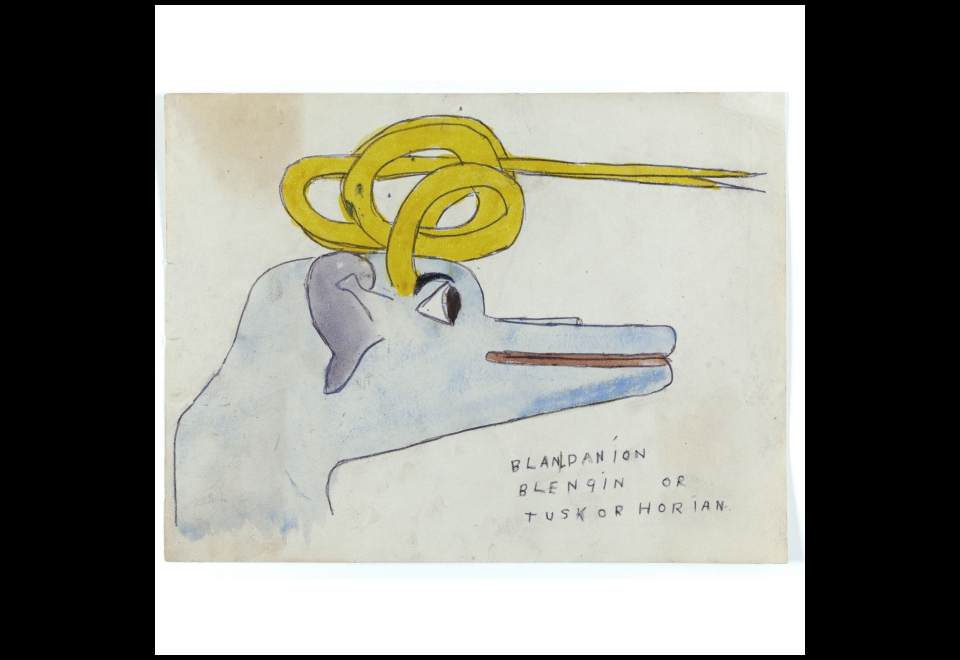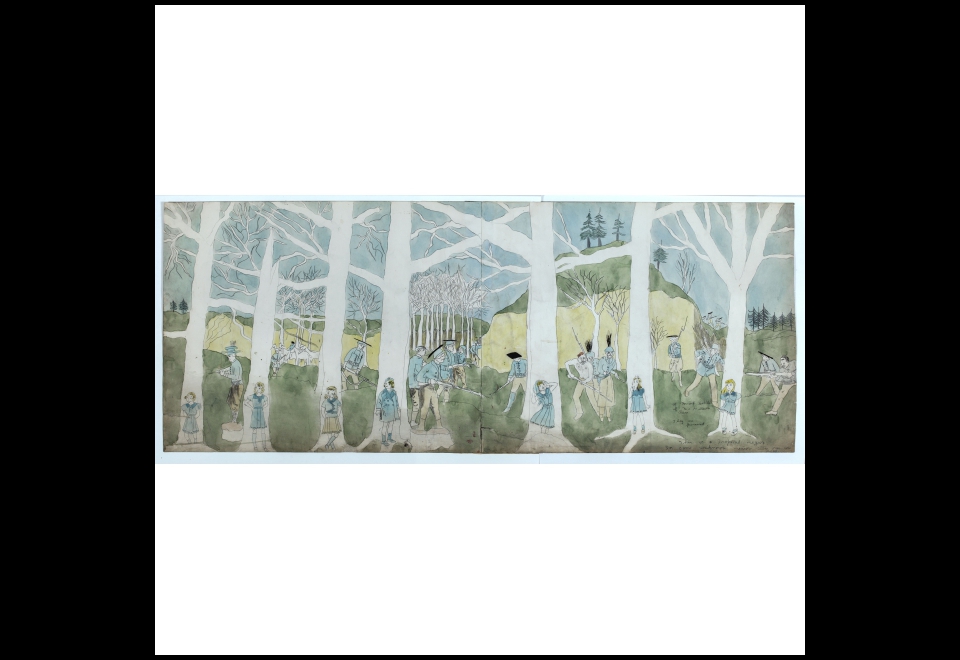Henry Darger1892 - 1973
From to
Following a remarkable donation of 45 works by the artist's estate in 2012–2013, the Musée d’Art Moderne de la Ville de Paris is devoting an exhibition to a 20th-century legend: Henry Darger (1892-1973). Complemented by loans from international institutions, the exhibition Henry Darger: xxx recreates the imaginary world of an artist now recognised as one of the major representatives of Outsider Art. Self-taught and long a marginal figure on the art scene, Darger created a unique personal realm, a strangely singular mix of historical narrative and American popular culture.

Following a remarkable donation of 45 works by the artist's estate in 2012–2013, the Musée d’Art Moderne de la Ville de Paris is devoting an exhibition to a 20th-century legend: Henry Darger (1892-1973). Complemented by loans from international institutions, the exhibition Henry Darger: xxx recreates the imaginary world of an artist now recognised as one of the major representatives of Outsider Art. Self-taught and long a marginal figure on the art scene, Darger created a unique personal realm, a strangely singular mix of historical narrative and American popular culture.
This exhibition embraces the different segments of an oeuvre discovered only a few months before Darger's death: large, double-sided narrative panels, flags, portraits and the masterpiece The Battle of Calverhine, on show for the first time in France. Three metres long, this work depicts the opening battle in Darger's saga of a revolt by enslaved children.
Born in Chicago in 1892, Henry Darger lost his mother at an early age and was placed in a home for the mentally handicapped. Escaping, he made his way on foot to Chicago, where he would spend the rest of his life working at menial jobs in hospitals. Until his death in 1973, this secretive, solitary figure devoted his spare time – often working at night – to his all-consuming project, The Realms of the Unreal, a vast literary and pictorial opus comprising a 15,000-page novel illustrated with large-scale drawings, watercolours and collages. This epic tells the story of an endless war triggered by the rebellion of children tyrannised by a people called the Glandelinians. The victims are backed in their struggle by the Angelinians, seven of whom – the Vivian Girls – are the heroines of the novel.
Darger's life and work have inspired generations of artists, among them the Chapman brothers, Paul Chan and Peter Coffin, as well as contemporary authors like Jesse Kellerman (The Genius) and Xavier Mauméjean (American Gothic): testimony to the enduring fascination he exerts.
The book accompanying the exhibition will contain essays on Darger's life and work, personal tributes and a dictionary that serves as a guide to his complex mythology.
Henry Darger is organised with the help of loans from MoMA in New York, the Collection d’Art Brut in Lausanne and various private collections.
Exhibition curator: Choghakate Kazarian
Exposition Henry Darger | Musée d'Art moderne... par paris_musees

The main National flag of Abbieannia
Musée d'Art Moderne de Paris
© Eric Emo / Musée d'Art Moderne / Roger-Viollet

Young Rebonna Dorthereans - Blengins - Catherine Isles, Female, One whip-lash-tail
Musée d'Art Moderne de Paris
© Eric Emo / Musée d'Art Moderne / Roger-Viollet

Blandanion Blengin or Tuskorhorian, 1910-1970
© Eric Emo / Musée d'Art Moderne / Roger-Viollet

Second battle of McAllister Run they are pursued
© Musée d'Art Moderne / Roger-Viollet

At Calmanrina murdering naked little girls
© Eric Emo / Musée d'Art Moderne / Roger-Viollet

At Jennie Richie are rescued by Evan
© Eric Emo / Musée d'Art Moderne / Roger-Viollet

At McCalls Run Coller Junction Vivian girl saves strangling children from phenomenon of frightful shape
Paris, musée d'Art moderne
© Eric Emo / Musée d'Art Moderne / Roger-Viollet

General Johnson Jacken Manley
Paris, musée d'Art moderne
© Eric Emo / Musée d'Art Moderne / Roger-Viollet

Henry Darger, Abbieannia, 1910-1970
Paris, musée d'Art moderne
© Eric Emo / Musée d'Art Moderne / Roger-Viollet

Henry Darger, Concentinia, 1910-1970
Paris, musée d'Art moderne
© Eric Emo / Musée d'Art Moderne / Roger-Viollet

Henry Darger, Statues strangling children, 1910-1970
© Musée d'Art Moderne / Roger-Viollet

Henry Darger, Make daring escape 1910-1970
© Eric Emo / Musée d'Art Moderne / Roger-Viollet

